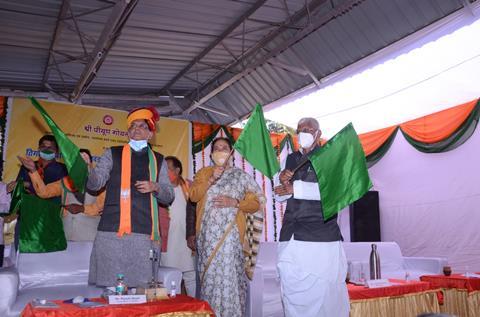
INDIA: The final section of the 25 kV 50 Hz electrification on North Western Railway’s Delhi – Ajmer route was officially commissioned on November 29, when Minister of Railways Piyush Goyal flagged off the first electric train to operate between Dighawara and Bandikui.
The 35 km section completes a corridor which runs south from Rewari near Delhi to meet the Agra – Jaipur line at Bandikui and then turns southwest through Jaipur to Ajmer.
Addressing a socially distanced celebration at Dhigawara station, Goyal explained that Indian Railways was ‘moving forward in a phased manner with fast pace and quality’, adding that electrification of the route would contribute to a ‘cleaner and greener environment’ in the National Capital Region. It would help to eliminate the pollution associated with diesel traction, while reducing India’s dependence on imported fuel.
Although the Mumbai – Kota line was electrified 35 years ago, the minister said there had been little further electrification in Rajasthan for many years. This omission was now being addressed as part of the government’s programme to electrify the entire broad gauge network by the end of 2023. In the five years to September 2020, he reported, no less than 1 433 route-km in the state had been wired at an average of around 240 km/year.
Electrification of the Delhi Sarai Rohilla – Madar – Ajmer route has been undertaken by the Central Organisation for Railway Electrification, which established a project team in Jaipur and seven local electrification depots. According to CORE, the project involved the construction of six traction sub stations, 26 switching stations and 23 418 mast foundations.
IR has electrified 18 065 route-km in 2014-20, lifting the national total to around 41 500 km or 66% of the network. It expects to complete the electrification of a further 28 143 km over the next three years.
Electrification is expected to increase the average speed of trains and support industrial and agricultural development, offering farmers the ability to move their produce further and faster.

















